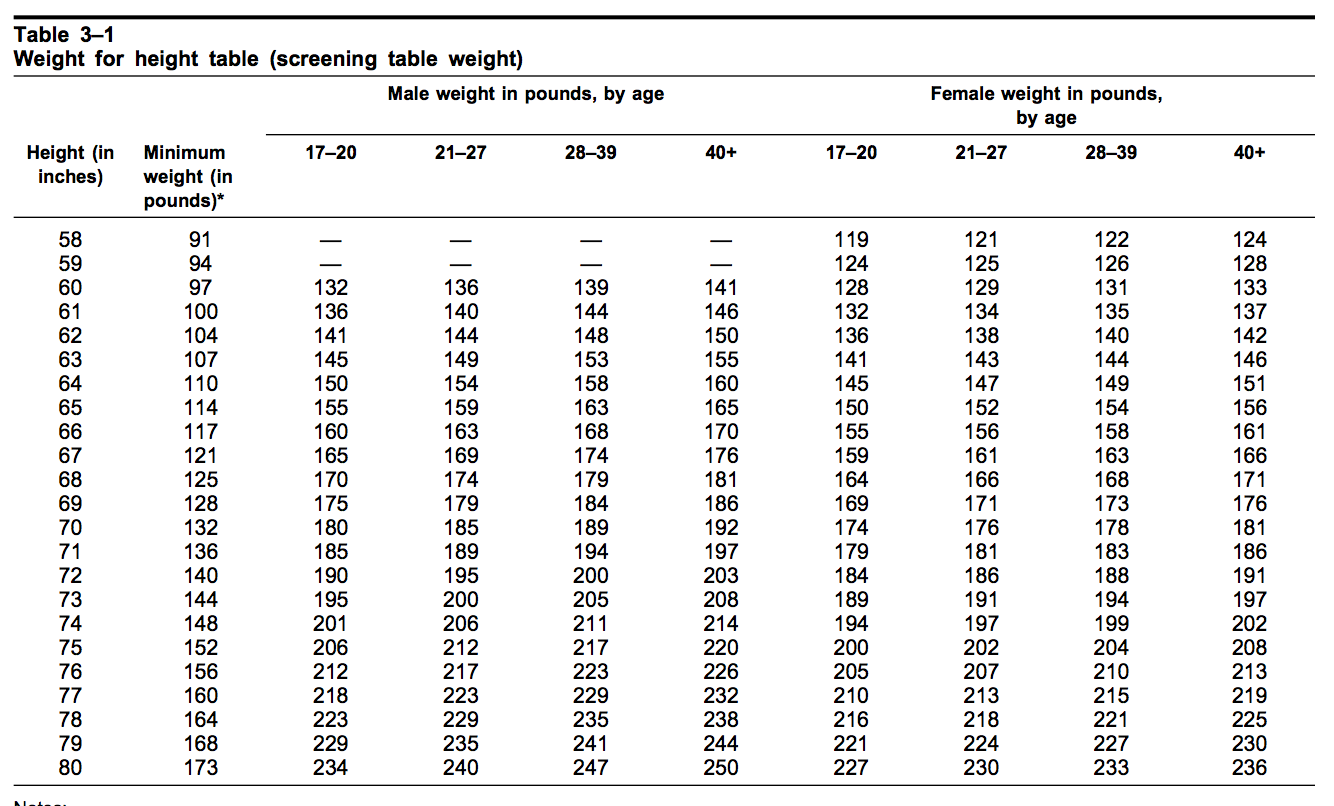The Army's new weight standards have stirred discussions among service members and their families, marking a significant shift in how physical readiness is measured. These changes aim to create a more inclusive environment while addressing the health and fitness of soldiers. In this article, we will delve deep into the new weight standards, their implications, and how they affect current and future soldiers.
With the evolving nature of military service, it is crucial to keep up with the latest regulations that govern physical fitness. The new weight standards not only focus on physical appearance but also on overall health and performance. In the following sections, we will explore the details of these changes, providing insights into what they mean for soldiers and the Army as a whole.
From understanding the rationale behind these adjustments to the specific metrics involved, we aim to provide a thorough overview that will enlighten service members and civilians alike. By the end of this article, readers will have a comprehensive understanding of the Army's new weight standards and their significance.
Table of Contents
- 1. Overview of the Army's New Weight Standards
- 2. Key Changes in the Standards
- 3. Rationale Behind the Changes
- 4. Implications for Soldiers
- 5. Comparison with Previous Standards
- 6. Practical Steps for Soldiers
- 7. Resources for Assistance
- 8. Conclusion and Future Outlook
1. Overview of the Army's New Weight Standards
The Army has implemented new weight standards aimed at enhancing the overall health and performance of its soldiers. These standards are designed to be more inclusive, taking into consideration a soldier's body composition and overall fitness rather than just their weight alone.
What Are the New Standards?
The new standards include adjustments in the weight categories based on age and height, as well as the introduction of body fat percentage measurements. The Army is moving towards a more holistic approach that emphasizes physical fitness over mere weight.
2. Key Changes in the Standards
The latest revisions to the Army's weight standards include several key components:
- Introduction of body composition assessments alongside weight measurements.
- Age and gender-specific standards to ensure fairness and accuracy.
- Emphasis on overall physical fitness, including aerobic capacity and strength.
3. Rationale Behind the Changes
The Army's shift in weight standards stems from a recognition of the diverse body types and fitness levels within its ranks. The goal is to promote health and readiness while ensuring that all soldiers meet performance standards.
Health and Performance Focus
Research has shown that a soldier's physical capability is not solely determined by weight. Factors such as muscle mass and body fat percentage play critical roles in overall fitness and performance.
4. Implications for Soldiers
With the new standards in place, soldiers need to be aware of how these changes affect them:
- Soldiers may have more opportunities to succeed in meeting physical fitness requirements.
- Increased focus on overall health can lead to better performance in duty-related tasks.
- Support programs may be available to help soldiers meet the new standards.
5. Comparison with Previous Standards
Historically, the Army relied heavily on weight as a primary indicator of fitness. The previous standards often led to soldiers feeling pressured to meet weight limits without consideration for their overall health. The new approach aims to correct these shortcomings.
Differences in Assessment Methods
Previously, soldiers were measured solely by weight against a chart. Now, with the inclusion of body fat percentage and fitness assessments, the Army aims to provide a more comprehensive evaluation.
6. Practical Steps for Soldiers
For soldiers looking to adapt to the new weight standards, several steps can be taken:
- Engage in regular physical training that includes cardiovascular, strength, and flexibility exercises.
- Consult with nutritionists to develop a balanced diet that supports fitness goals.
- Participate in Army fitness programs that provide guidance and support.
7. Resources for Assistance
The Army offers a variety of resources to assist soldiers in meeting the new weight standards:
- Access to fitness centers and personal trainers.
- Nutritional programs and workshops.
- Online resources and forums for support and guidance.
8. Conclusion and Future Outlook
The Army's new weight standards represent a significant shift towards a more inclusive and health-focused approach to physical readiness. By prioritizing overall health and performance, the Army is setting its personnel up for success in their military careers.
As these standards take effect, soldiers are encouraged to embrace the changes and utilize available resources to achieve their fitness goals. The Army remains committed to ensuring that all soldiers can serve effectively and healthily.
We invite readers to share their thoughts on the new weight standards in the comments below, and feel free to explore more articles on our site for additional insights and information related to military fitness and health.
Thank you for reading, and we look forward to seeing you back here for more valuable content!
Bjorgvin Arnarsson: The Life And Journey Of A Gay Icon
Jessica Tarlov On The Five: A Deep Dive Into Her Career And Influence
Exploring Chrissy From Love And Hip Hop New York: A Deep Dive Into Her Life And Career


